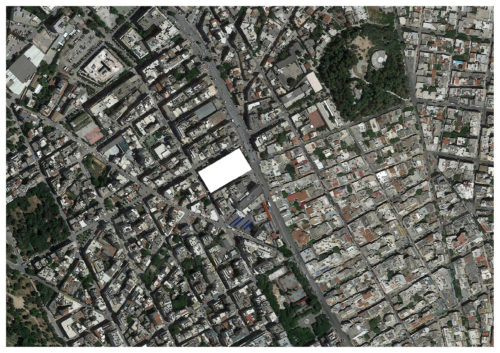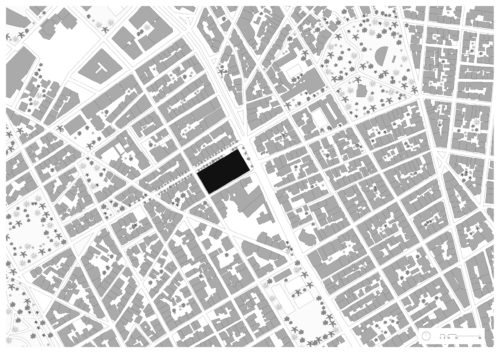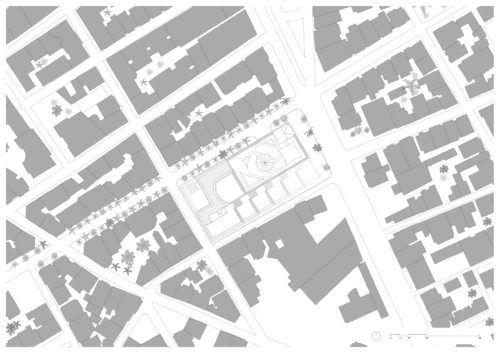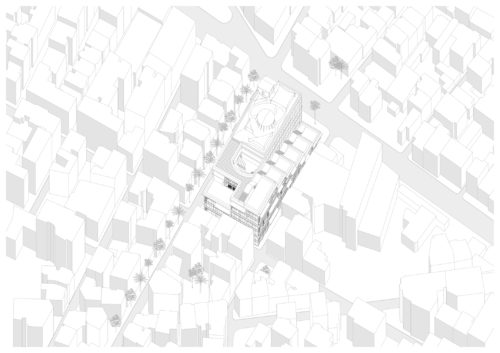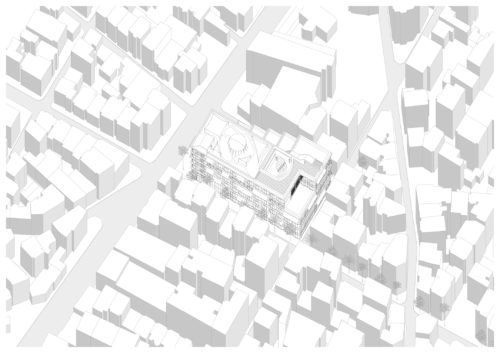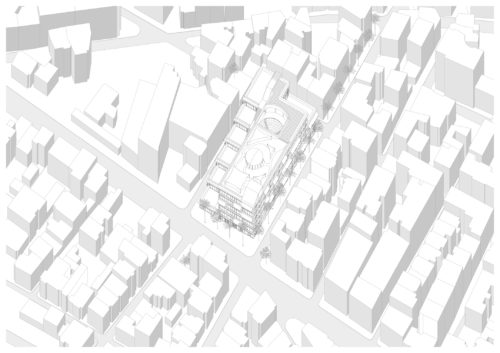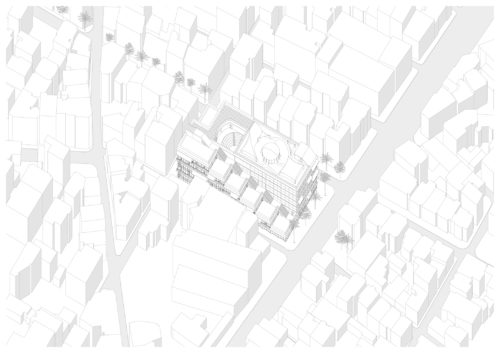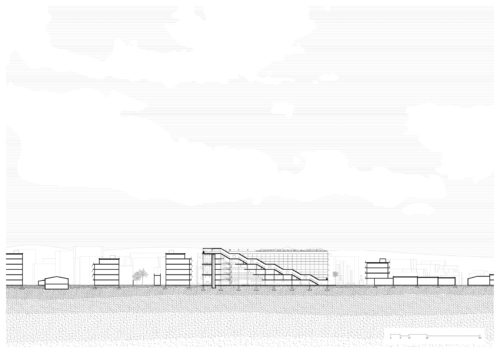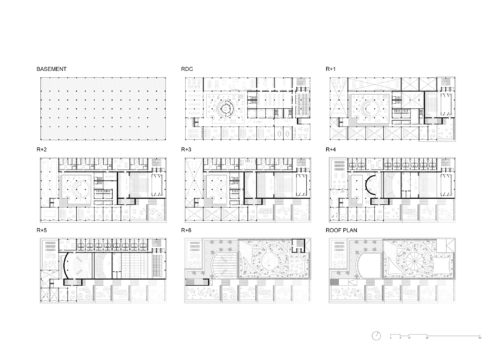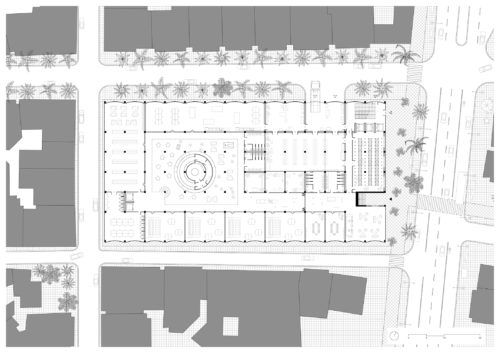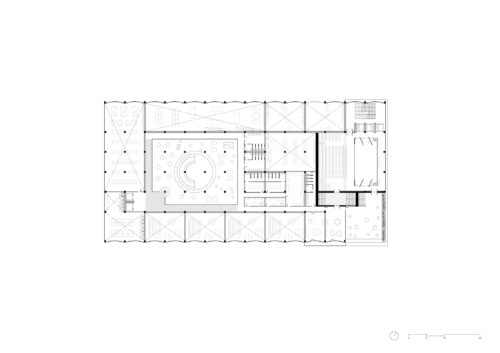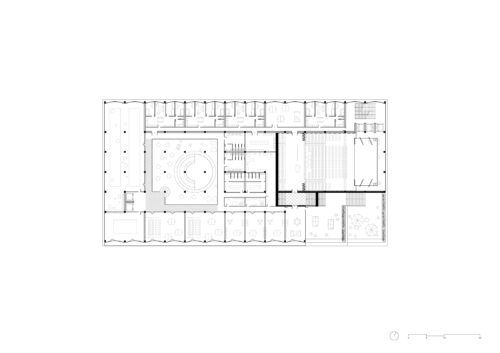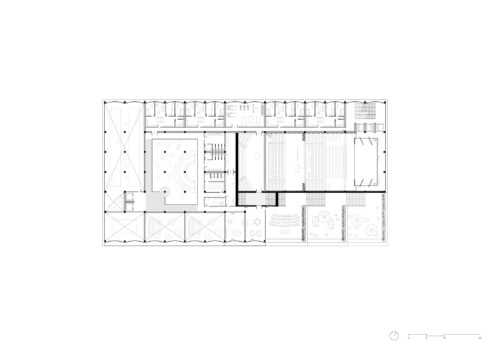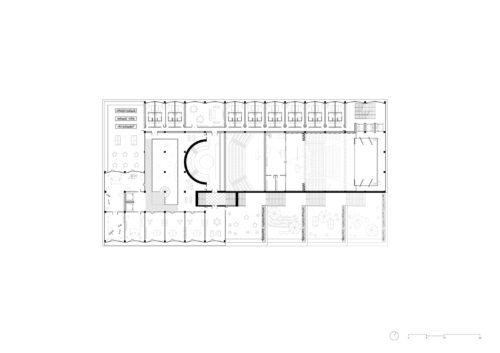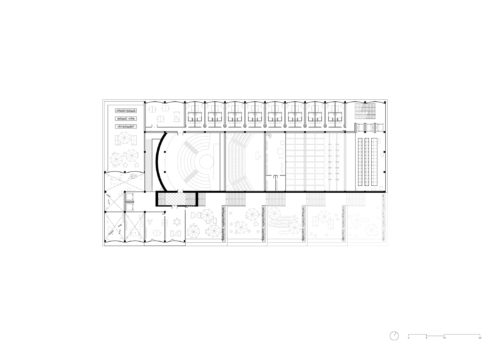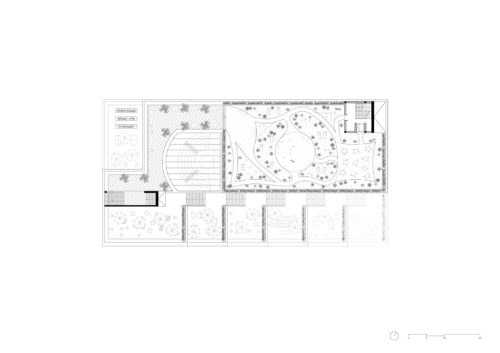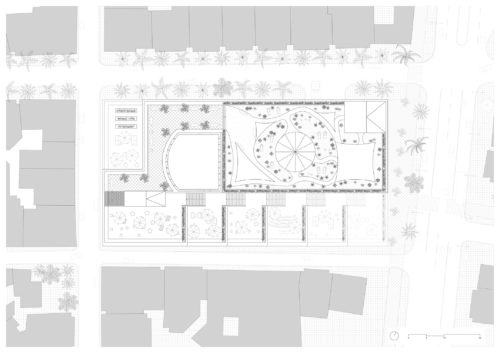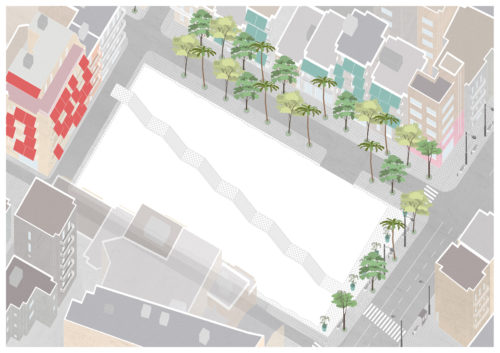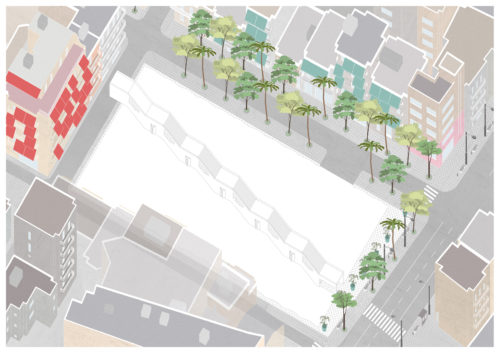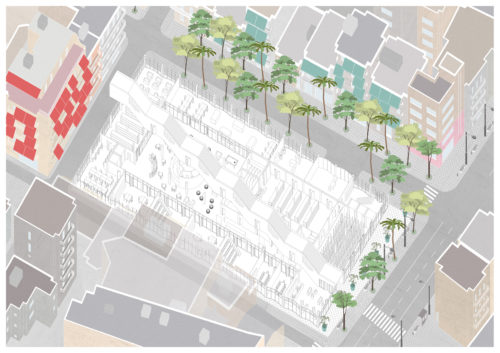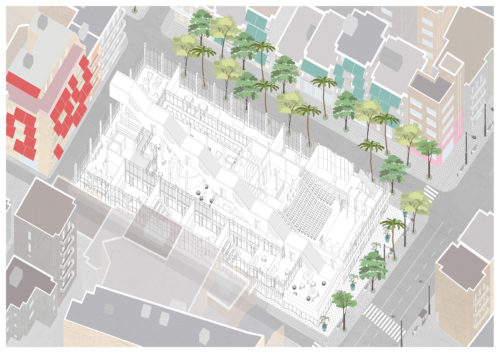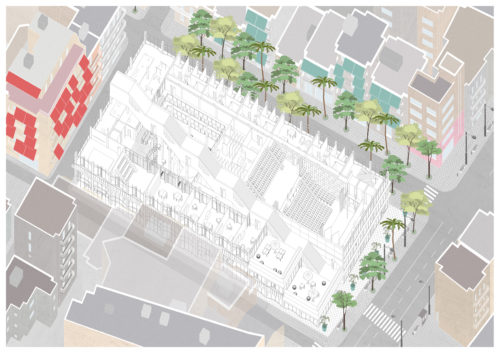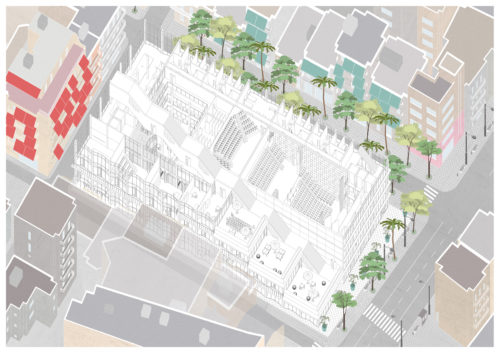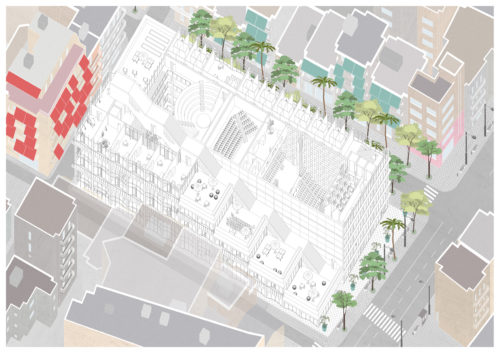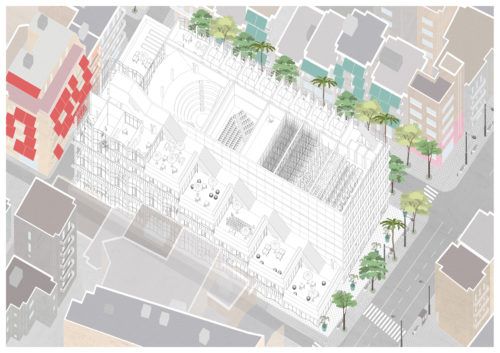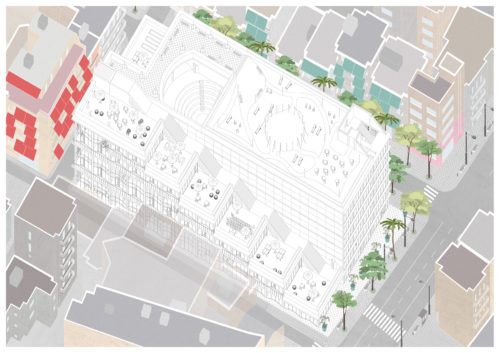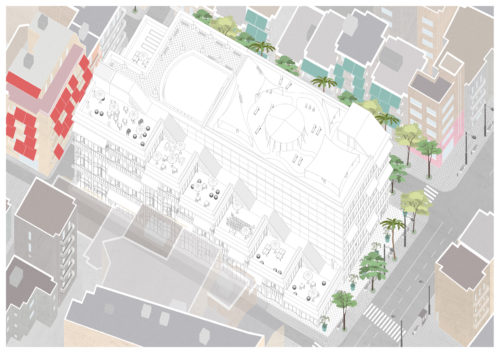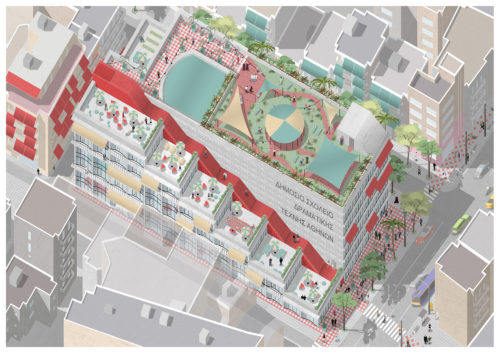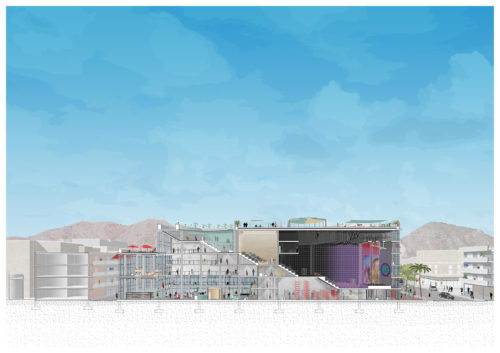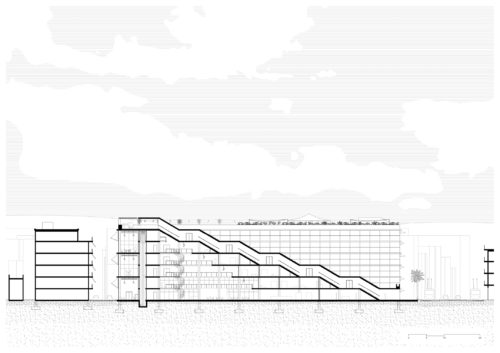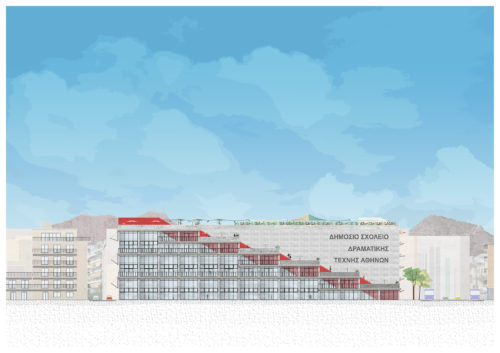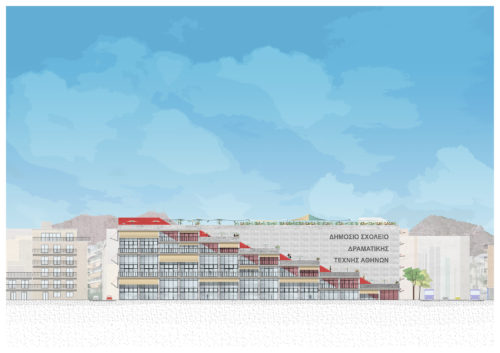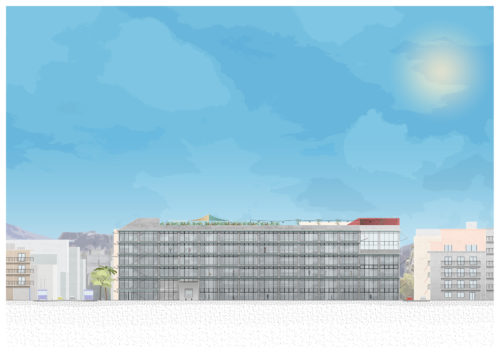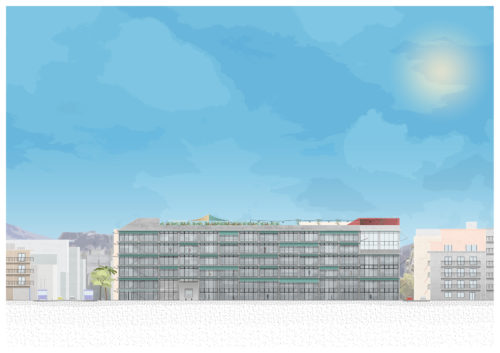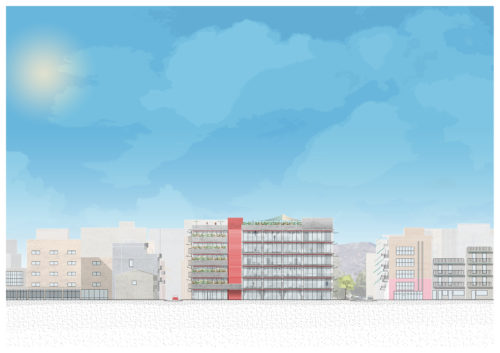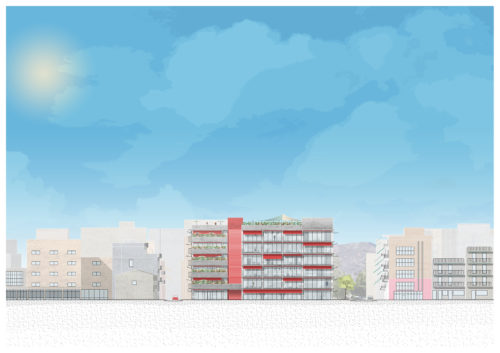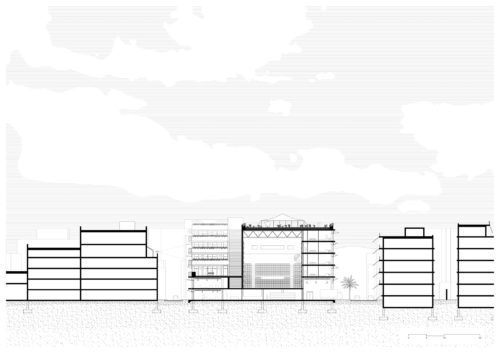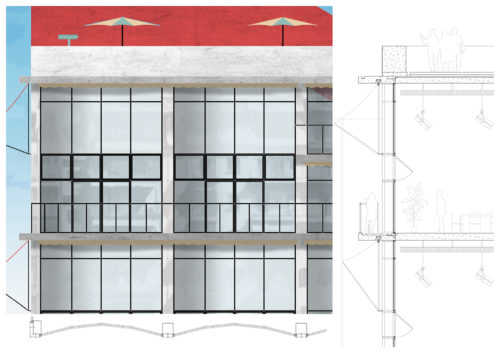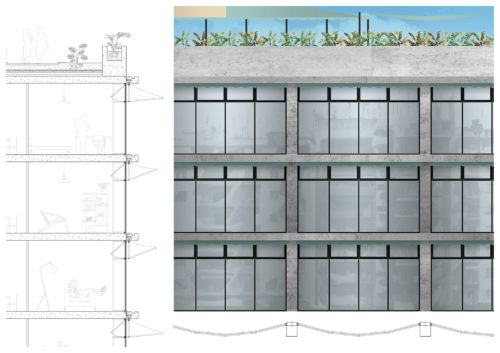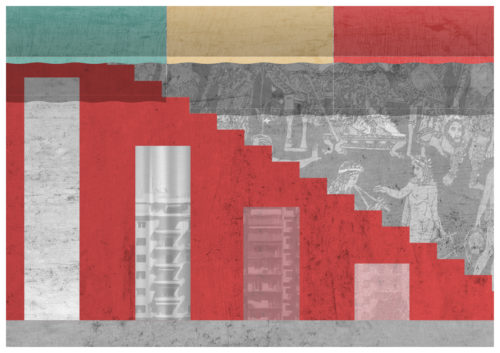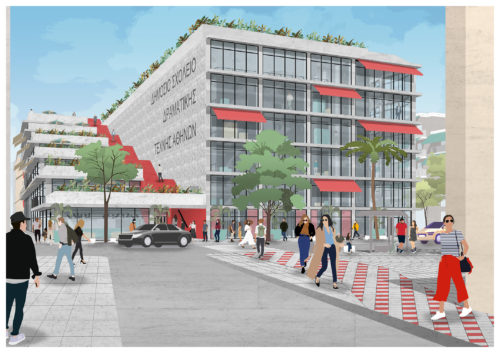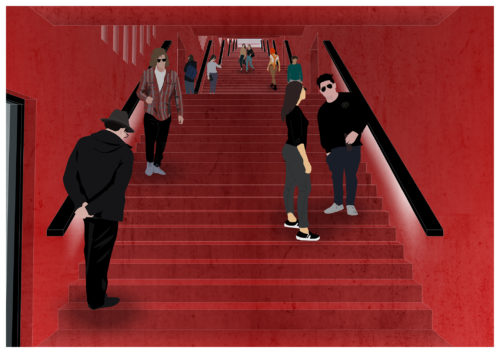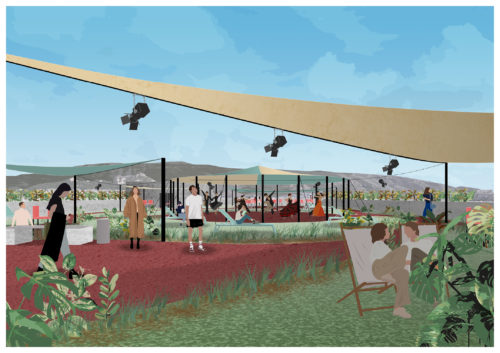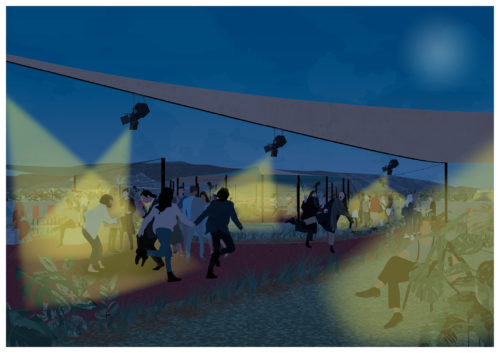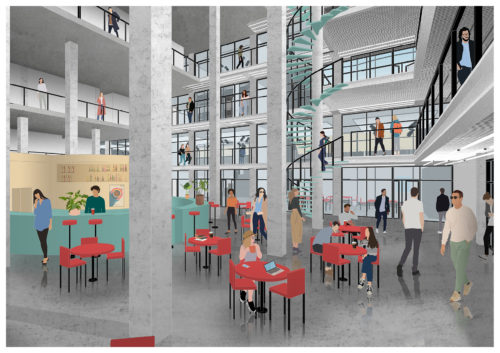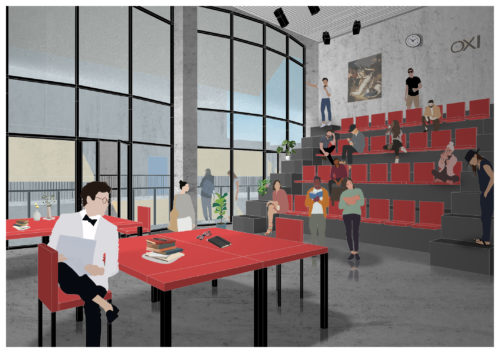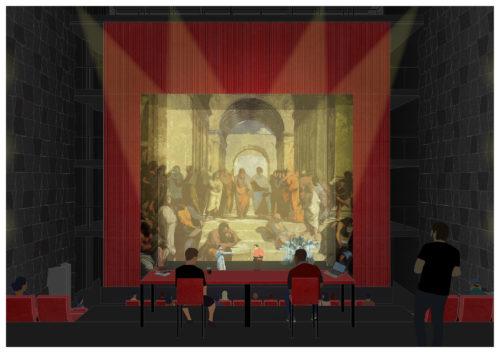Implantation - Between the Districts of Kolōnós and Akadimía Plátonos
Implantation - Between the Districts of Kolōnós and Akadimía Plátonos
Site Axonometry - West Side
Site Axonometry - North Side
Site Axonometry - East Side
Site Axonometry - South Side
Territorial Section - A Morphological Connection Between the Districts
Atlas of Plans - A World in a World
Ground Floor - Opening to the City
First Floor - Principal Theatre Room, Library and Workshops
Second Floor - Principal Theatre Room, Gymnasium and Workshops
Third Floor - Amphitheater, Workshops, Gymnasium and Residences
Fourth Floor - Amphitheater, Workshops, Music Rooms and Residences
Fifth Floor - Hellenistic Theatre, Workshops, Gymnasium and Residence
Sixth Floor : The Continuity of the Street
Roof Plan : Suspended Garden
"A town is like a big house,
"A town is like a big house, the
"A town is like a big house, the streets
"A town is like a big house, the streets are
"A town is like a big house, the streets are only
"A town is like a big house, the streets are only the stairs."
Perspective Section - A Theatre Overlap
Longitudinal Section - Stairs Following the Overlap
South Elevation - Workshops
South Elevation - Workshops
North Elevation - Residences
North Elevation - Residences
East Elevation - Backstages
East Elevation - Backstages
Transversal Section - Dialogue with the Site
South Elevation & Details - Workshops
North Elevation & Details - Residences
Opaque and Reflective Material
A Resting Hanging Garden...
...Becoming a New World in Athens...
...Which Overhangs the Atrium
Working in a Theatrical Space...
...Until the Concecration on Stage.
